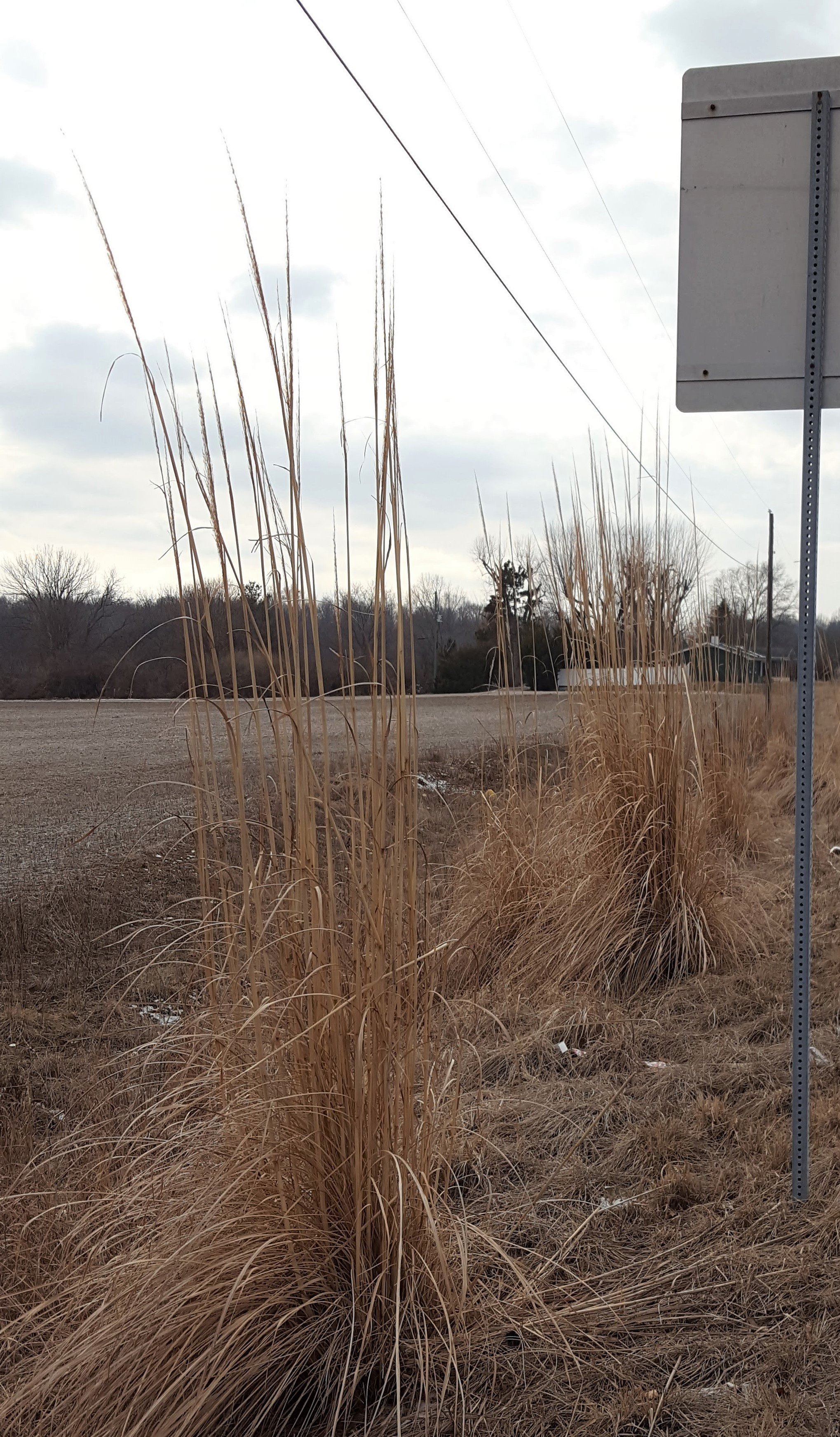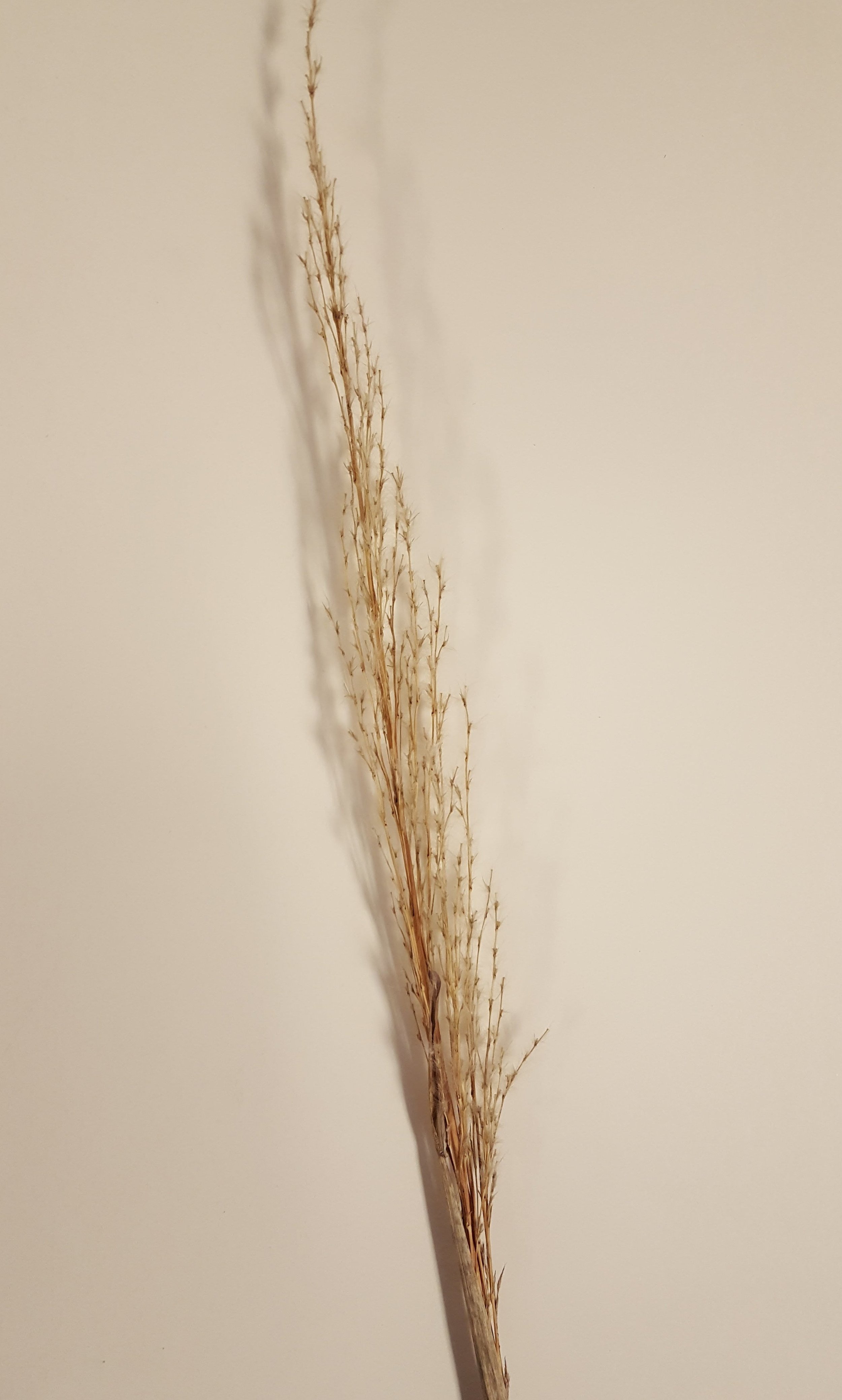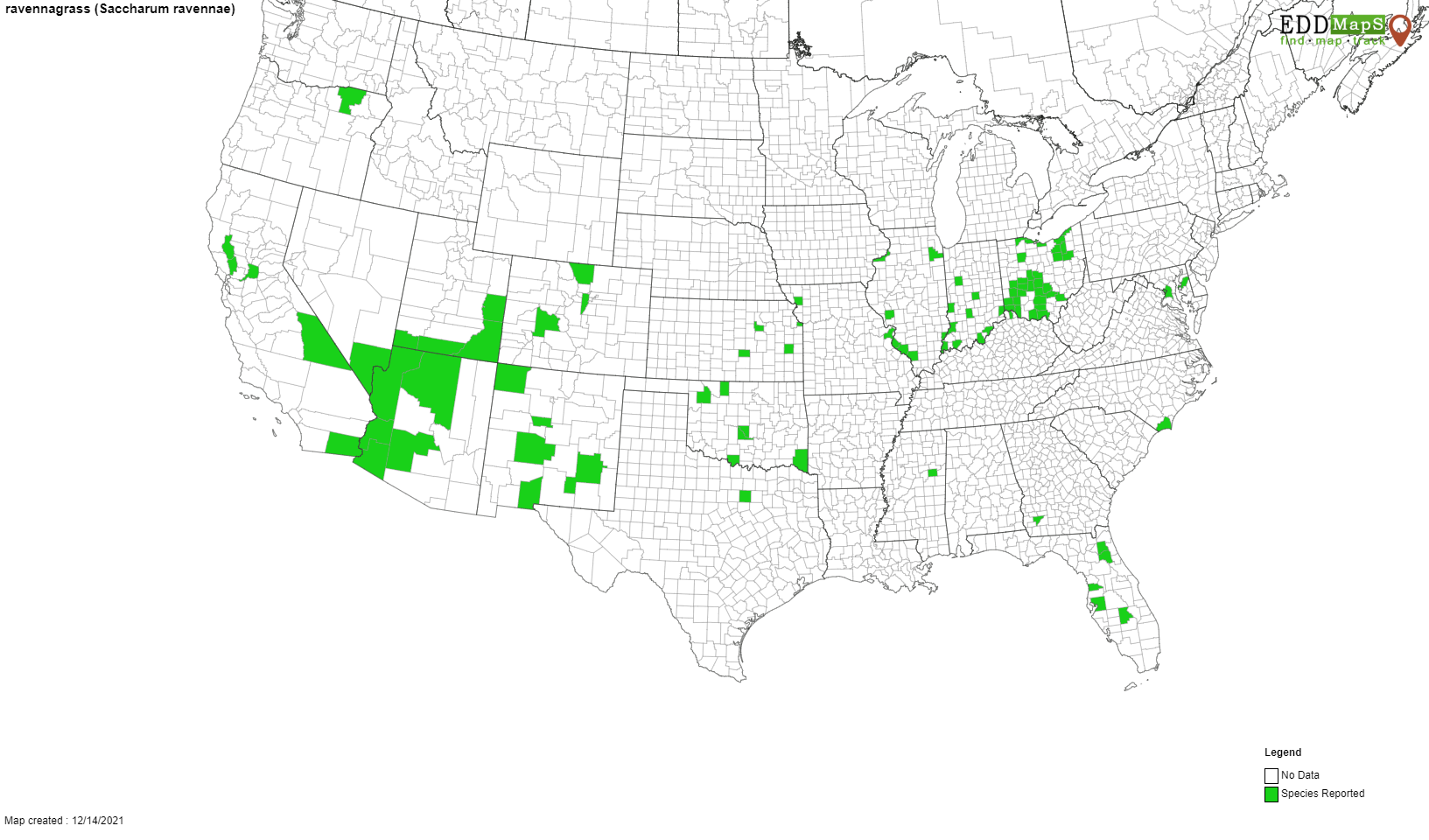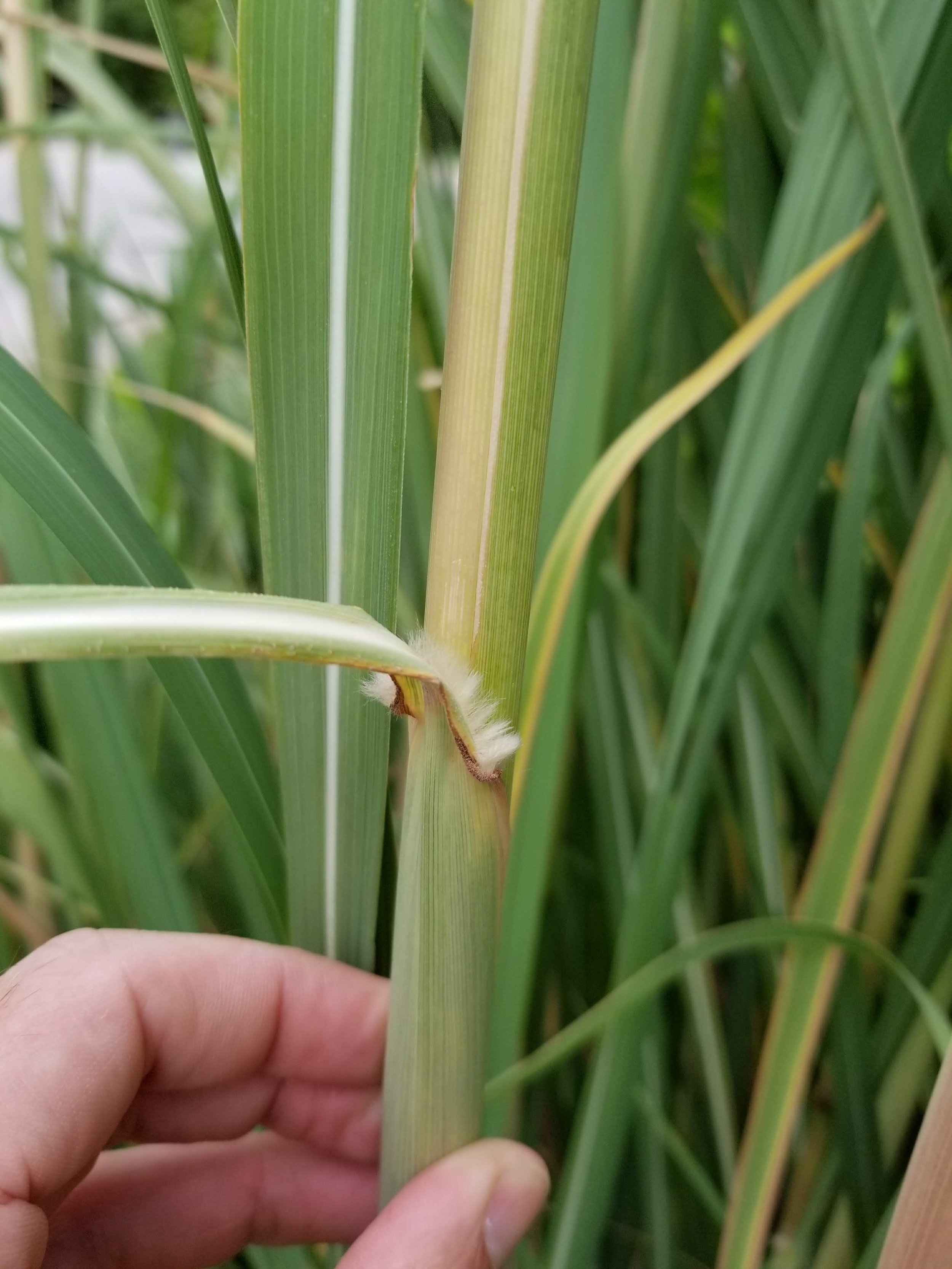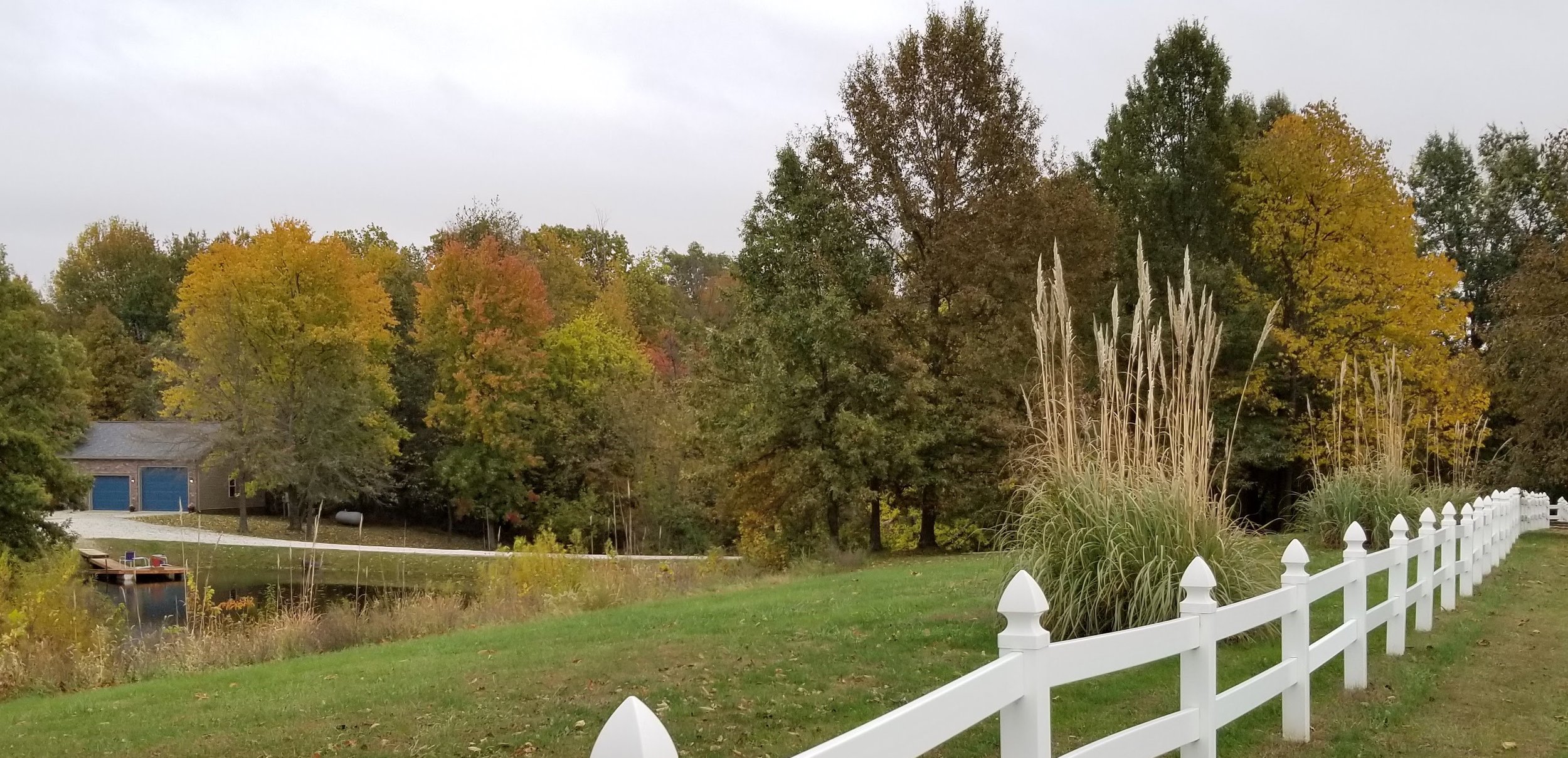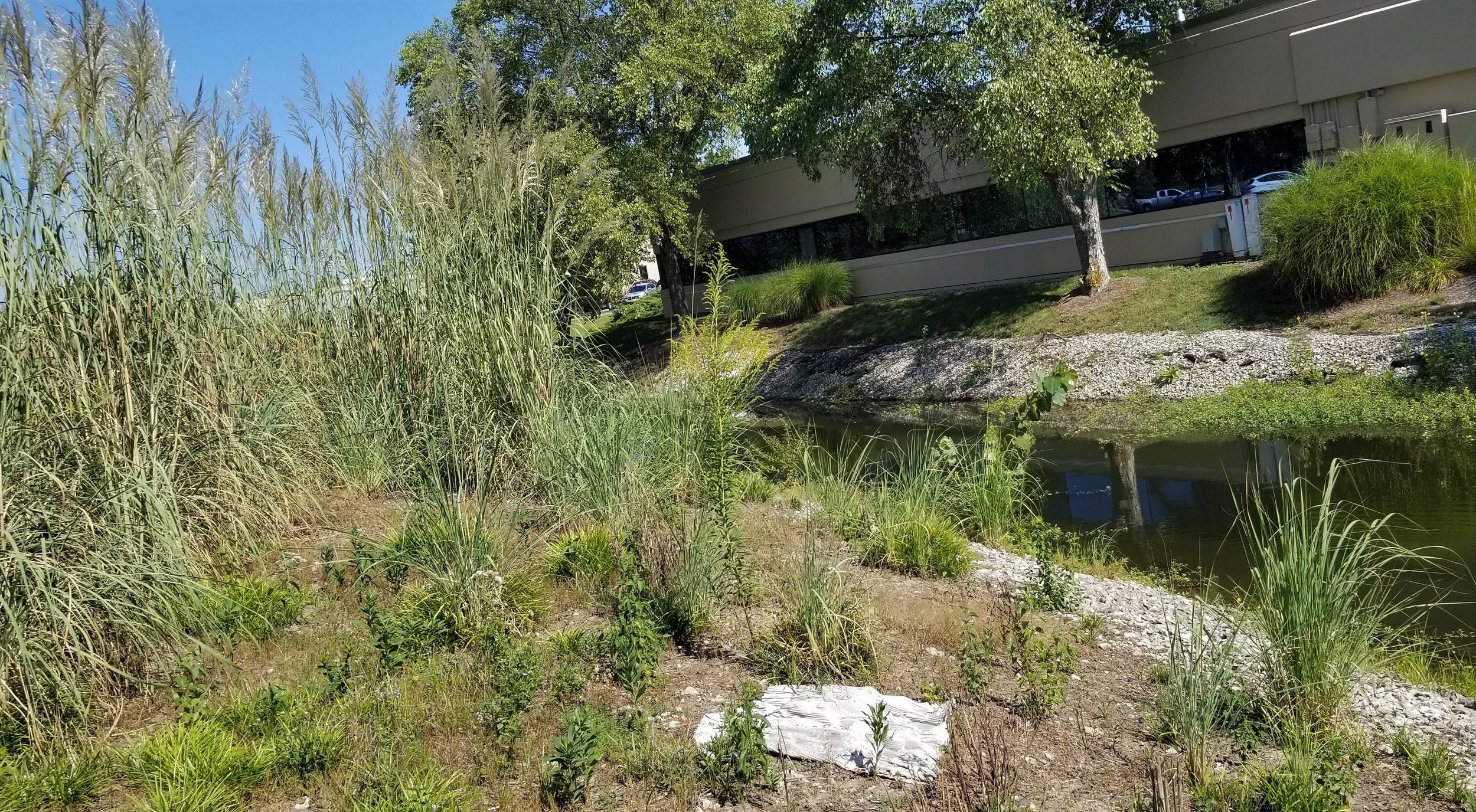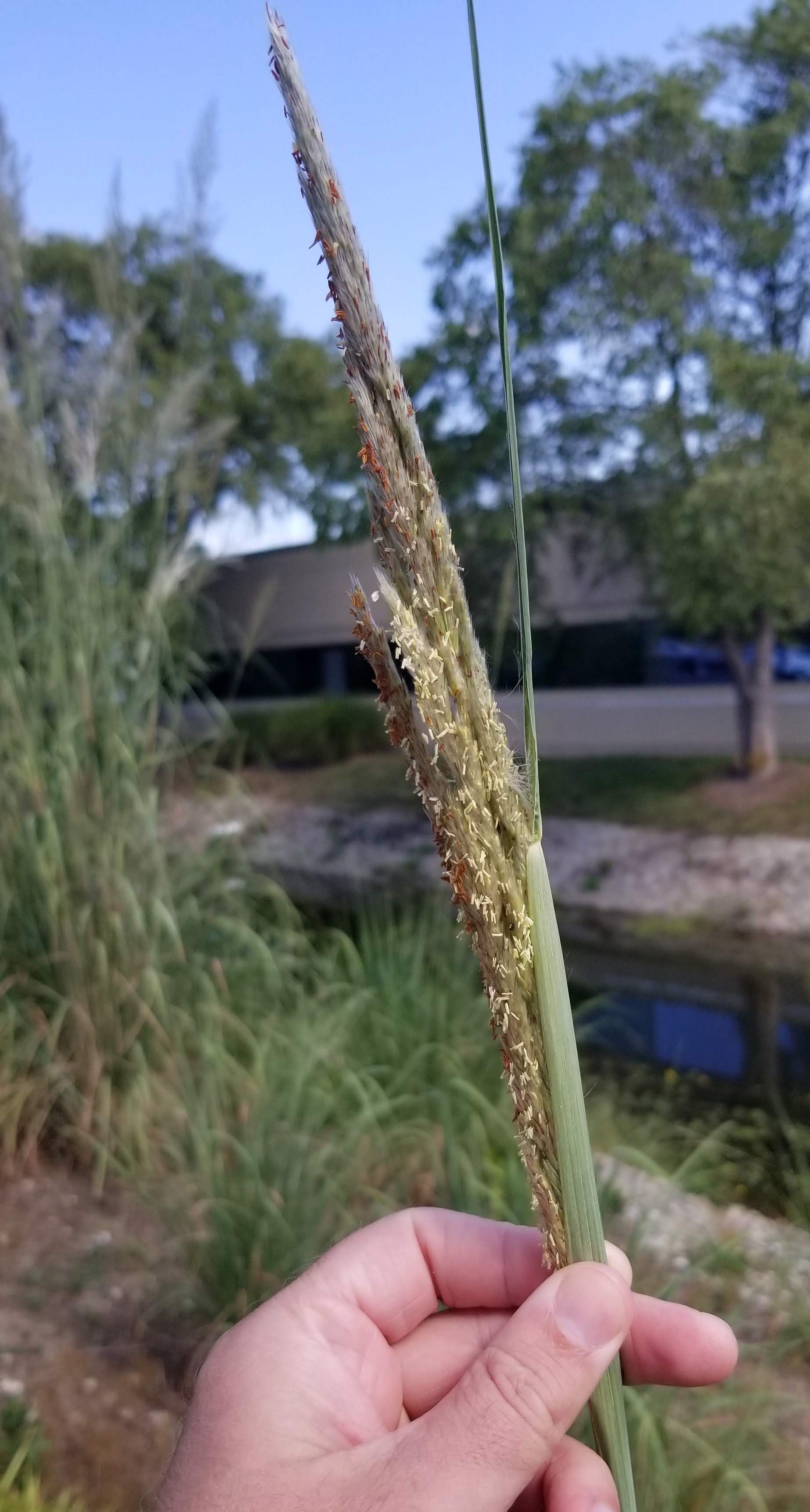DECEMBER 2021 INVASIVE PLANT OF THE MONTH
SICIM Email
Ravenna Grass (Saccharum ravennae L.)
Also known as Hardy Pampas Grass, Ravenna Grass (Saccharum ravennae L.) is a perennial, clumping grass that invades old fields, prairie plantings, marshes, pond/lake edges, roadsides, ditches, fencerows, and other disturbed areas. This grass grows to a large height of up to 13 ft. tall and easily stands out in late summer through winter. A native of Southern Europe, Northern Africa and Asia, this species was introduced to North America as an ornamental grass relatively recently and has now been reported in 10 Indiana counties on EDDMapS (mostly in the southern part of the state). (However, it is underreported; the author has personally spotted it in an additional 10 counties not yet reported on EDDMapS.) Ravenna Grass is currently ranked as a medium invasive plant as of the 2019 Indiana Invasive Plant Advisory Committee assessment.
IDENTIFICATION & BIOLOGY: Ravenna Grass is a perennial grass in the Poaceae family (aka grass family). It has long leaves (up to 2 ft.) with a wide, white midrib. These leaves also have a densely hairy ligule that looks quite fluffy. Ravenna Grass is a clumping grass species and waits until late in the summer to send up a culm and produce an inflorescence. The inflorescence is a panicle and looks like a tall plume as the seeds develop. Its leaf sheaths range from glabrous near the top of culm to densely hairy near the base. Ravenna Grass is a prolific seed producer, and a single inflorescence has been shown to contain as many as 10,000 seeds. These seeds are the primary vector of Ravenna Grass and are mainly wind dispersed.
LOOK-A-LIKES: There is a native Saccharum species that could be mistaken for Ravenna Grass called Silver Plume Grass (Saccharum alopecuroides). This is a relatively rare species and it mainly occurs in south central counties along the Ohio River. Silver Plume Grass is slight shorter than Ravenna Grass and has smaller, more silvery seed heads.
Other non-native or invasive look-a-like species include Common Reed (Phragmites australis), Pampas grasses (Cortaderia spp.), and Giant Reed (Arundo donax). Common Reed and Giant Reed have shorter leaves than Ravenna Grass, and Pampas grasses have narrower leaves and are often planted in warmer climates. Giant Reed also tends to have a shorter, wider inflorescence than Ravenna Grass, and Pampas grasses tend to have denser inflorescences. Also, none of these species have the densely hairy ligule that Ravenna Grass has.
HABITAT & DISTRIBUTION: Ravenna Grass may prefer riparian habitats, but it also grows easily in dry and rocky soils. It grows in full sun and moist to fairly dry soil conditions. Ravenna Grass can be found in old fields, prairie plantings, marshes, pond/lake edges, roadsides, ditches, fencerows, and other disturbed areas. It has been reported in 10 counties of Indiana and has been found in Kentucky, Michigan, Ohio, Illinois, Pennsylvania, Tennessee, and some Mid-Atlantic, Southern, and Western US states.
ECOLOGICAL THREAT: Ravenna Grass is expected to cause similar problems like other more studied large structured invasive grass, such as Common Reed (Phragmites australis) and Giant Reed (Arundo donax). These species tend to spread prolifically via seed production and rhizomatous offshoots. With their tall stature and dense form, these grasses are able to outcompete native vegetation and can alter ecosystem’s structure and function, especially wetlands and riparian areas. Ravenna Grass specifically has been shown to produce over 10,000 seeds per inflorescence with an 80% or higher germination rate. This high seed production and germination rate plus wind dispersal lead Ravenna Grass to have a high risk for widespread dispersal and range expansion.
CONTROL:
Prevention: Since Ravenna Grass was introduced intentionally as an ornamental grass, the best way to prevent an invasion is to not plant it.
Manual: Manual digging up of an individual clump of grass may be the most effective control method. If utilizing this method, be sure to get as much of the root system as possible.
Mechanical: Mowing or cutting back may stress the plant and delay flowering and seed production, but this method alone has not be shown to be effective for controlling Ravenna Grass.
Chemical: While there are not any studies to give a recommended herbicide control method, a foliar application of 2% glyphosate should be effective. The addition of a surfactant is recommended for increased herbicide efficacy. Ravenna Grass should be targeted early before the culms develop or in fall for herbicide control. If waiting until fall to chemically treat, mowing when the culms start developing should limit seed production and reduce amount of foliage to treat.
IMPORTANT: The pesticide label is the law! When using any chemical control, always read the entire pesticide label carefully, follow all mixing and application instructions and use all personal protective gear and clothing specified. Contact the Office of Indiana State Chemist (OISC) for additional pesticide use requirements, restrictions or recommendations.
Maintenance: Monitoring is recommended as control methods for this species have not been extensively studied.
REFERENCES & OTHER RESOURCES:
https://www.eddmaps.org/distribution/uscounty.cfm?sub=57527
http://www.phytoneuron.net/2016Phytoneuron/78PhytoN-RavennagrassOhio.pdf
https://wiki.bugwood.org/Saccharum_ravennae
http://www.docs.dcnr.pa.gov/cs/groups/public/documents/document/dcnr_010233.pdf.
https://www.entm.purdue.edu/iisc/pdf/plants/Saccharum_ravennae.pdf
LOOK-A-LIKE REFERENCES:
https://plants.usda.gov/home/plantProfile?symbol=COSE4
https://plants.usda.gov/home/plantProfile?symbol=SAAL21
https://books.google.com/books/about/Invasive_Plants.html?id=FjESf1w8_uwC
